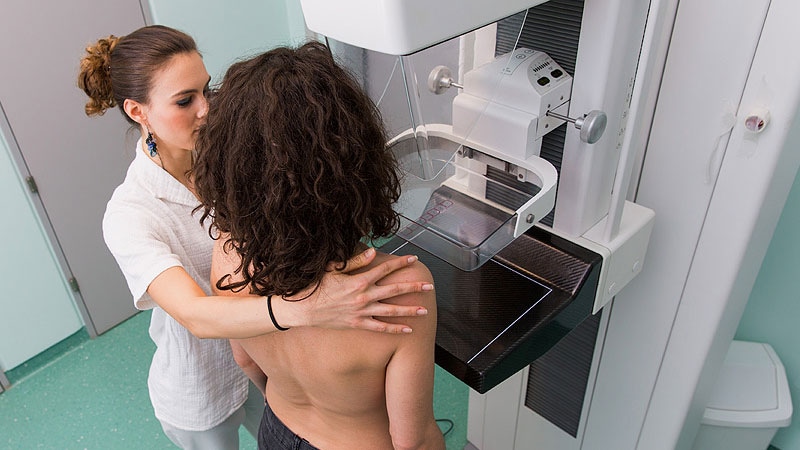Impact of Screening and Treatment on Breast Cancer Mortality in the US
Conceitos Básicos
Improved screening and treatments significantly reduce breast cancer mortality rates.
Resumo
The content discusses the decline in breast cancer mortality rates in the United States between 1975 and 2019, attributing it to advancements in screening and treatments. The Cancer Intervention and Surveillance Modeling Network (CISNET) developed simulation models to quantify the impact of these interventions on mortality rates. Key highlights include:
- Decline in breast cancer mortality rates in the US from 1975 to 2019.
- Contribution of therapeutic advances to the decline.
- Analysis of mortality trends based on ER/ERBB2 status.
- Comparison of mortality rates with and without interventions.
- Breakdown of mortality reduction percentages attributed to different interventions.
- Survival gains in metastatic forms based on ER/ERBB2 status.
- Limitations of the study, including data precision and disparities consideration.
- Conclusion on the impact of screening and treatment on breast cancer mortality.
Personalizar Resumo
Reescrever com IA
Gerar Citações
Traduzir Texto Original
Para Outro Idioma
Gerar Mapa Mental
do conteúdo original
Visitar Fonte
www.medscape.com
Screening and Treatment Reduce Breast Cancer Mortality
Estatísticas
Between 1975 and 2019, breast cancer mortality in the US decreased significantly.
The overall absolute reduction in mortality was 58% due to screening and various treatments.
29% of the mortality decline was attributed to treating metastatic forms.
47% to recent treatments for stages I-III.
25% to mammography screening.
Citações
"Therapeutic advances played a pivotal role in the decline in breast cancer mortality rates."
"Approximately 25% of the observed decline can be attributed to the treatment of metastatic forms."
Principais Insights Extraídos De
by Dr Pierre Ma... às www.medscape.com 02-08-2024
https://www.medscape.com/viewarticle/screening-and-treatment-reduce-breast-cancer-mortality-2024a10002qo
Perguntas Mais Profundas
How do disparities related to age, gender, and ethnic origin impact the effectiveness of breast cancer screening and treatment?
Disparities related to age, gender, and ethnic origin can significantly impact the effectiveness of breast cancer screening and treatment. Age-related disparities may affect the frequency of screening recommendations and the aggressiveness of treatment options. For example, older women may be less likely to undergo regular screenings, leading to delayed detection and treatment. Gender disparities can influence access to healthcare services, with some studies suggesting that women may face challenges in receiving timely and appropriate care. Ethnic disparities can also play a role, as certain ethnic groups may have different genetic predispositions to breast cancer or varying levels of access to quality healthcare. These disparities can result in differences in screening rates, treatment adherence, and overall outcomes for individuals from diverse age, gender, and ethnic backgrounds.
What are the potential drawbacks of relying heavily on simulation models to analyze healthcare outcomes?
While simulation models can provide valuable insights into healthcare outcomes, there are potential drawbacks to relying heavily on them. One limitation is the accuracy of the models, which depends on the quality and completeness of the data used to develop them. Inaccurate or incomplete data can lead to biased results and unreliable conclusions. Additionally, simulation models may oversimplify complex healthcare systems and fail to account for all relevant variables, leading to potentially misleading findings. Moreover, these models may not capture the full range of individual patient characteristics and preferences that can impact treatment outcomes. Finally, simulation models may not always reflect real-world clinical practice or consider the dynamic nature of healthcare delivery, limiting their generalizability and applicability to diverse patient populations.
How can the findings of this study influence future approaches to breast cancer treatment and screening?
The findings of this study can have significant implications for future approaches to breast cancer treatment and screening. The study highlights the importance of a comprehensive strategy that includes both screening and treatment interventions to reduce breast cancer mortality. The emphasis on the effectiveness of treatments for hormone receptor-positive breast cancers underscores the need for personalized and targeted therapies based on tumor characteristics. Moving forward, healthcare providers may consider incorporating these findings into clinical practice by prioritizing early detection through regular screening and optimizing treatment strategies for different subtypes of breast cancer. Additionally, the study's focus on the impact of disparities on outcomes emphasizes the importance of addressing healthcare inequities to ensure that all individuals have equal access to high-quality breast cancer care. By leveraging these insights, future approaches to breast cancer treatment and screening can be tailored to improve outcomes and reduce disparities among diverse patient populations.
0
